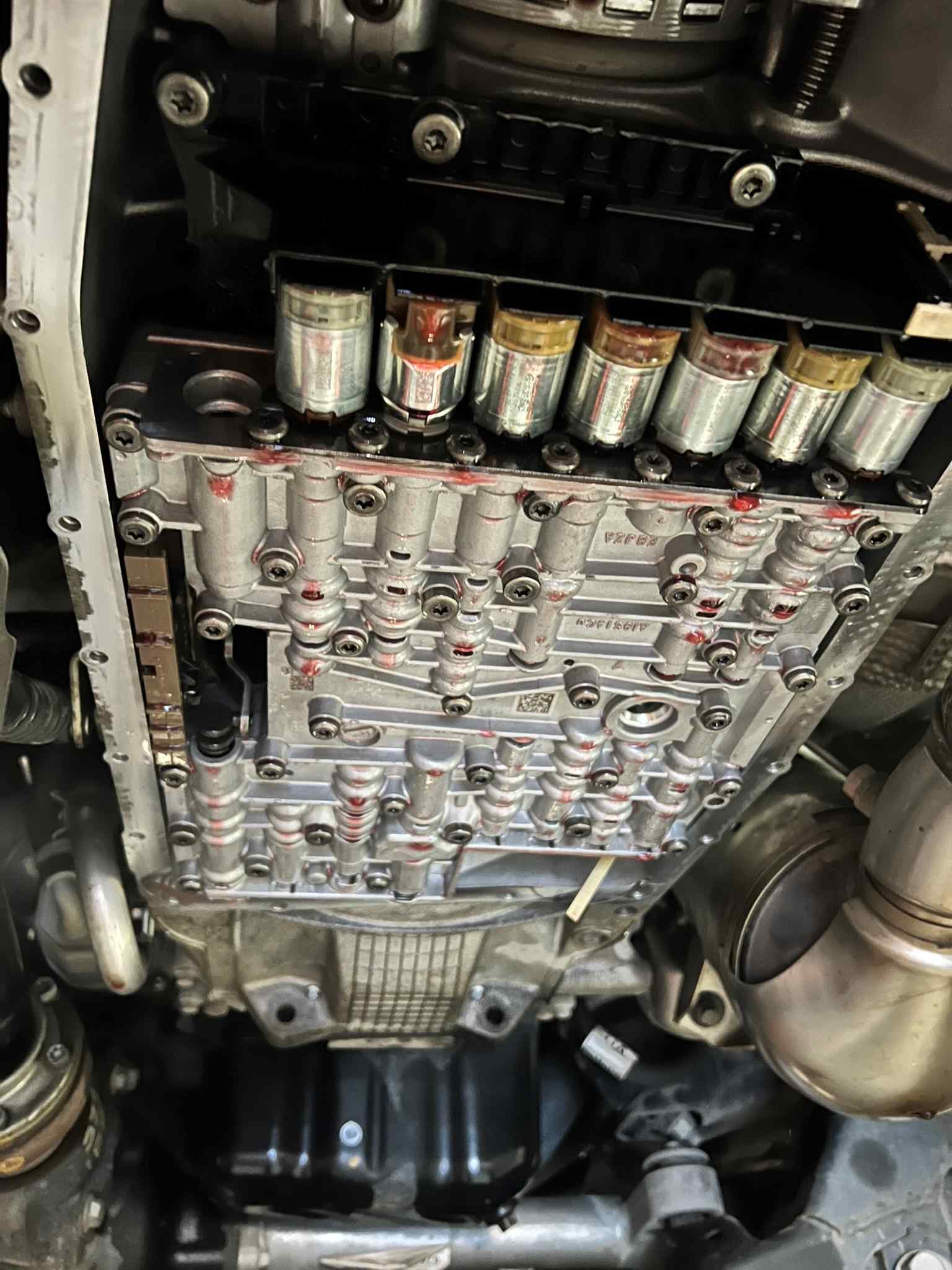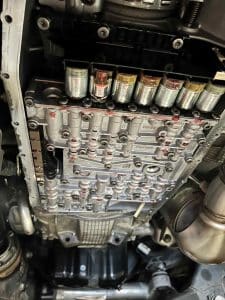AW30-40LE Valve Body Failure

AW30-40LE Valve Body Failure
How AW30-40LE Valve Body Failure on Isuzu D-MAX & MU-X Transmission Faults Diagnosed Properly at Brisbane Tuning & Turbo.
If your Isuzu D-MAX or MU-X is starting to hesitate, slam into gear, or trigger fault codes like P2700 or P2703, you’ve likely been told that your transmission is on its way out. Maybe the dealer said you need a new automatic transmission. Perhaps your general mechanic mentioned the torque converter. Maybe someone reset the code and told you to “just drive it for now.” Click here if you want to read more about automatic transmission diagnostics.
The truth? In most cases, you’re not dealing with a full transmission failure—you’re dealing with a worn valve body inside the AW30-40LE automatic. And at Brisbane Tuning & Turbo, we’ve built a process to diagnose and fix that fault before you throw away money on parts that don’t need replacing.
AW30-40LE
The AW30-40LE is a four-speed automatic found in 2012–2020 Isuzu D-MAX and MU-X models, as well as a handful of Holden Rodeos and Colorados. It’s a tough unit with a simple layout, based on an older Aisin design. It’s used across the world in diesel-powered utes and SUVs. But in real-world Australian conditions—heat, towing, red dust, and traffic—it develops one recurring failure. The hydraulic control system inside the valve body starts to wear out. And that’s where all the weird shifting, the flashing dash, and the hard-to-read scan codes begin.
When the valve body in an AW30-40LE wears, it doesn’t blow up. It leaks internally. The solenoid valves that control clutch application and line pressure begin to drift out of spec. The bores they sit in go out of round. The separator plate begins to warp. And because these parts are buried deep inside the transmission, most workshops never see them. They just quote a replacement or a second-hand box. That’s why our “Redorq Reman” diagnostic process exists. Because if you can simulate the fault under dyno load and confirm the control logic is failing, not the hardware, you can solve it without touching the rest of the gearbox.
Shift that doesn’t feel right
The first sign that something’s wrong is usually a shift that doesn’t feel right. Perhaps you notice a delay between the second and third, or a flare into fourth when the car is cold. You might hear the revs rise slightly before the car pulls forward under light throttle. You might feel a light shudder at 80 km/h. Then, the dash lights up. You plug in a scan tool or get a report from your local mechanic, and you see a fault like P2700, P2703, or P0744. The car might go into limp mode. Or it might drive normally after a reset—until it doesn’t. If you’re seeing this issue, don’t guess — book our Scan + Quote Only service and get a dyno-backed, scan-confirmed diagnosis before wasting thousands.
Let’s be clear about what these codes actually mean.
P2700
P2700 refers to the friction element apply time being out of range. That’s a fancy way of saying the transmission is taking too long to engage a clutch after being commanded to do so. It doesn’t mean the clutch is burnt—it means the hydraulic pressure isn’t rising fast enough.
P2703
P2703 is a companion code. It says that one specific element—usually the second clutch in the AW30—is responding late. That’s almost always due to pressure bleed inside the valve body.
P0744
P0744 points to torque converter clutch performance issues. If the converter is locking up early, late, or inconsistently, this code fires. But unless there’s actual shudder or fluid burn, the cause is often upstream—in the valve body’s modulation of the converter circuit.
Codes are not random
These codes are not random. They are the logical consequence of a worn hydraulic control system. And they are not a death sentence for the gearbox. What they are is a warning that your AW30-40LE has lost some of its ability to regulate internal pressure—pressure that controls gear timing, shift smoothness, and torque converter lock-up. That’s not something a flush will fix. That’s something you diagnose, confirm, and correct—by replacing the valve body, not the whole transmission.
So, how do we confirm it? At Brisbane Tuning & Turbo, we don’t guess. We diagnose. The “Redorq Reman” test process begins with a full scan of the TCM and powertrain control system. We don’t just read the codes—we extract freeze frame data to see when and how the fault occurred. Then we graph live solenoid data under temperature to compare expected clutch apply timing against actual performance. This tells us whether a solenoid is lagging, leaking, or misfiring.
AW30 problems
From there, we run the vehicle on our in-house dyno. Why? Because most AW30 problems show up under load. We simulate the exact conditions that cause the fault—uphill, towing load, light throttle cruise, downshift hesitation. On the dyno, we can observe converter lock-up patterns, shift flare, or forced derates in real time. We watch pressure modulation behaviour and torque delivery—data you can’t get from a basic road test. Finally, we inspect the transmission fluid for colour, contamination, and signs of overheating. Burnt fluid tells us the hydraulic circuit has been struggling. Milky fluid means temperature control has failed. And clean fluid with slipping behaviour usually confirms internal pressure loss.
This complete diagnostic process is offered as a fixed-price package. For $285 including GST, we perform scan, dyno, and fluid testing—and provide a written quote and repair path. We don’t quote parts until we’ve proven the fault. That’s the Redorq difference.
AW30 valve body failure
If the test confirms a valve body failure, we replace it with a remanufactured, bench-tested unit. This includes corrected solenoid bores, an updated separator plate, and tested solenoids that flow to spec. The valve body is installed in-house. The transmission is refilled with high-quality ATF. The vehicle is reprogrammed where supported. And then it goes back on the dyno for post-repair verification.
The full job is from $1,975 including GST. That includes parts, labour, fluid, programming, and verification. No guesswork. No box swap. Just the right repair, confirmed before a spanner is turned.
For customers using their D-MAX or MU-X for towing, we also offer optional upgrades. A heavy-duty cooler can be installed to prevent future fluid degradation under load. And for vehicles showing early converter shudder or inconsistent lock-up timing, we can pair the valve body install with a Redorq Torque Converter+ remap to optimise torque modulation and driveability.
Most AW30 valve body jobs are completed within 3 business days once diagnosed. We keep local remanufactured units in stock and can source specific builds quickly through our supplier network. We do not use second-hand units, and we do not install parts we haven’t tested ourselves.
If your Isuzu is showing signs of slipping, late shifts, or converter issues—don’t let someone sell you a whole gearbox. Book a real diagnostic. The AW30-40LE is a solid transmission, but its valve body is the part that fails. And once that’s replaced properly, most vehicles go straight back to work.
Call Brisbane Tuning & Turbo today on 07 3276 7969 or book online. Ask for the Redorq Reman Diagnostic. Let’s find out exactly what’s wrong—before anyone tells you what to replace.